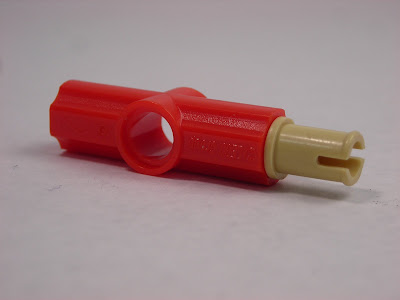
In my experience, the tan axle pin is the element most likely to be damaged when I'm teaching with the NXT or another Technic set.
As best I can tell, my students damage the pin tips when they are trying to remove it from another part, especially if they use their teeth (shudder).
Bent axle pins won't spin freely in a Technic hole, and they won't grip a hole well enough to stay in place.
If the axle side is stuck in a gear or a beam, you can use an axle to push it out from the other side. That's not an option with a number of Technic connectors, like the one shown in the photo above.
Sometimes, I can get a fingernail between the collar of the axle pin and the connector, but not always.
If I put something in the pin, like an antenna, I can grip the pin and pull it out easier. The antenna prevents the pin tips from getting crushed when I squeeze the pin half of the axle pin.
update:
The below picture from the building instruction of box
 8842 shows how LEGO recommends to disassemble some constructions, including how to remove an axle-pin. Note how the axle-pin is first stuck in a beam to prevent the pin getting deformed by the thin antenna size insert. This insert pushes the axle-pin firmly in the beam so it will have more friction then the (old style) Technic connector.
8842 shows how LEGO recommends to disassemble some constructions, including how to remove an axle-pin. Note how the axle-pin is first stuck in a beam to prevent the pin getting deformed by the thin antenna size insert. This insert pushes the axle-pin firmly in the beam so it will have more friction then the (old style) Technic connector. Do any of you have another method for separating these parts?